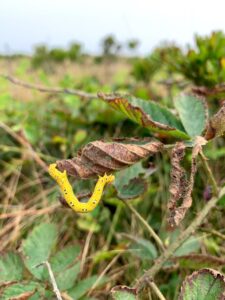The Land Bank protects over 3,500 acres, all of which are dedicated to conservation, recreation, and agriculture. Habitat management refers to the methods we use to preserve, protect, and enhance the ecological integrity of our habitats and the rare and endangered species that they support.
The grasslands and heathlands that are so characteristic of Nantucket are early successional habitats, meaning they require disturbance to maintain them at that stage to prevent transition into a forest. These globally-rare, early successional plant communities are valuable, and provide important habitat for birds, insects, wildflowers, and grasses. Some of the finest examples of sandplain grassland and coastal heathland in the world can be found on Nantucket in Smooth Hummocks and Head of the Plains. Here you can observe northern harriers hunting in the shrublands, chain dot geometer caterpillars feasting on huckleberry, and a wide variety of wildflowers which are rare in the state of Massachusetts but readily found on Nantucket.
In the absence of disturbance, most ecosystems will naturally undergo ecological succession. This means that, over time, landscapes will transition to gradually more complex structures: e.g., from bare sand with dune grass to a grassland with perennial herbaceous plants, to a shrubland, and finally into a forest, which is the ultimate successional stage. We maintain early successional habitats with disturbance methods including routine mowing, occasional tree removal, and when weather permits, prescribed fire. If we did not maintain these unique ecosystems in this way, we would experience loss of habitat for rare species that call Nantucket home.


